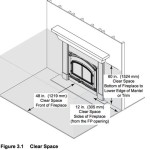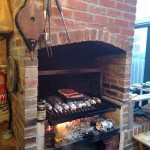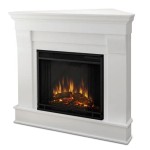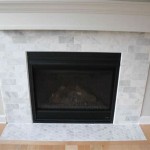Fireplace Inserts in Minnesota, USA: A Comprehensive Guide
Minnesota, with its long and harsh winters, places a premium on efficient and reliable heating solutions. Among the various options available, fireplace inserts have emerged as a popular choice for homeowners seeking to enhance the warmth and aesthetics of their living spaces. Fireplace inserts are self-contained units designed to fit into existing masonry or prefabricated fireplaces, offering improved heating efficiency and reduced emissions compared to traditional open fireplaces. This article provides a detailed overview of fireplace inserts in Minnesota, exploring their benefits, types, installation considerations, maintenance requirements, and relevant regulations.
Understanding the Benefits of Fireplace Inserts
Traditional open fireplaces, while aesthetically pleasing, are notoriously inefficient. A significant portion of the heat generated escapes through the chimney, resulting in substantial energy loss and higher heating costs. Fireplace inserts address this issue by providing a controlled combustion environment and utilizing advanced technologies to maximize heat output. Several key benefits contribute to the popularity of fireplace inserts in Minnesota:
Increased Heating Efficiency: Fireplace inserts are designed to radiate heat more effectively into the room, minimizing heat loss through the chimney. Modern inserts often boast efficiency ratings exceeding 70%, a significant improvement over open fireplaces, which typically have efficiency ratings below 20%.
Reduced Emissions: Newer fireplace inserts, particularly those certified by the Environmental Protection Agency (EPA), incorporate advanced combustion technologies that significantly reduce emissions of particulate matter and other pollutants. This contributes to cleaner air quality and a healthier environment, addressing environmental concerns in Minnesota.
Improved Safety: Open fireplaces pose a safety risk due to sparks, embers, and the potential for chimney fires. Fireplace inserts, with their closed combustion chambers, minimize these risks, providing a safer heating option for Minnesota homes. The controlled burning also reduces the risk of carbon monoxide poisoning.
Enhanced Aesthetics: Fireplace inserts are available in a wide range of styles and finishes, allowing homeowners to customize the look of their fireplace and complement their home décor. From traditional cast iron designs to contemporary stainless steel models, there are options to suit various aesthetic preferences in the state's diverse architectural landscape.
Zone Heating Capability: Fireplace inserts can effectively heat specific areas of a home, reducing the need to heat the entire house and resulting in lower energy bills. This is particularly beneficial in Minnesota, where heating costs can be substantial during the winter months. Homeowners can focus heating efforts on frequently used rooms, conserving energy and saving money.
Exploring Different Types of Fireplace Inserts
Fireplace inserts are available in various fuel types, each with its own advantages and disadvantages. The selection of the appropriate insert depends on factors such as fuel availability, heating needs, and personal preferences. Common types of fireplace inserts found in Minnesota include:
Wood-Burning Fireplace Inserts: Wood-burning inserts are a traditional and popular choice, offering a classic ambiance and reliable heat source. Modern wood-burning inserts are designed to burn wood more efficiently and cleanly, meeting EPA emission standards. Considerations for wood-burning inserts include the availability and cost of firewood, as well as the need for proper wood storage and handling. In Minnesota, where wood is often readily available, these inserts can be a cost-effective heating solution.
Gas Fireplace Inserts: Gas inserts offer convenience and ease of use, with the ability to start and control the flame with the push of a button. They are available in both natural gas and propane models, providing flexibility based on local fuel availability. Gas inserts are typically cleaner-burning than wood-burning inserts, requiring less maintenance and producing fewer emissions. They are a practical option for homeowners seeking a hassle-free heating solution in Minnesota's climate.
Electric Fireplace Inserts: Electric inserts provide a clean and convenient heating option, requiring no venting and offering simple installation. They operate on electricity and can be easily controlled with a thermostat. While they may not provide the same level of heat as wood or gas inserts, electric inserts are a good choice for supplemental heating and aesthetic purposes. These are particularly suitable for apartments or homes where venting is not feasible or desired in Minnesota.
Pellet Fireplace Inserts: Pellet inserts burn compressed wood pellets, offering a balance between the convenience of gas and the eco-friendliness of wood. Pellet inserts typically have automatic feeding systems and thermostats, making them easy to operate and maintain. The consistent fuel source ensures a steady and predictable heat output. Pellet inserts are gaining popularity in Minnesota due to their efficiency and environmental benefits.
Key Considerations for Fireplace Insert Installation in Minnesota
Proper installation is crucial for the safe and efficient operation of a fireplace insert. It is highly recommended to hire a qualified professional to ensure that the installation meets all local codes and regulations. Several key considerations should be taken into account during the installation process in Minnesota:
Chimney Inspection and Cleaning: Before installing a fireplace insert, the existing chimney should be thoroughly inspected and cleaned to ensure it is in good condition and free from obstructions. In Minnesota, where chimneys are subjected to harsh weather conditions, regular inspections are essential to prevent chimney fires and ensure proper venting. A professional chimney sweep can assess the condition of the chimney and recommend any necessary repairs or upgrades.
Proper Venting: The fireplace insert must be properly vented to ensure that combustion gases are safely expelled from the home. The venting system should be compatible with the type of fuel used by the insert. Wood-burning inserts require a different type of venting than gas inserts. Improper venting can lead to carbon monoxide poisoning and other health hazards. Minnesota's building codes often specify venting requirements for fireplace inserts, so it's vital to adhere to them.
Adequate Hearth Protection: The area in front of the fireplace insert must be protected with a non-combustible hearth extension to prevent sparks and embers from igniting nearby flooring or furniture. The size and material of the hearth extension are typically specified by local building codes and the insert manufacturer. This is particularly important in Minnesota homes with wood flooring.
Electrical Connections: If the fireplace insert requires electricity for operation, such as for a blower or thermostat, a qualified electrician should handle the electrical connections. Improper electrical wiring can create a fire hazard. It’s important to ensure that the electrical work complies with Minnesota's electrical codes.
Permits and Inspections: In many jurisdictions in Minnesota, a building permit is required for fireplace insert installation. It is important to check with the local building department to determine the permit requirements and schedule any necessary inspections. These inspections ensure that the installation meets safety standards and building codes. Failing to obtain the necessary permits can result in fines and delays.
Professional Installation: Due to the complexities involved in fireplace insert installation, it is strongly recommended to hire a qualified professional with experience in installing fireplace inserts in Minnesota. A professional installer can ensure that the insert is properly installed, vented, and connected, and that all safety regulations are met. They can also provide guidance on selecting the right type of insert for your specific needs and budget.
Maintaining Your Fireplace Insert for Optimal Performance
Regular maintenance is essential for ensuring the safe and efficient operation of a fireplace insert. Proper maintenance can extend the lifespan of the insert and prevent costly repairs. Key maintenance tasks include:
Regular Cleaning: The fireplace insert should be cleaned regularly to remove ash, soot, and creosote. Creosote buildup in the chimney can be a fire hazard, so it is important to have the chimney inspected and cleaned by a professional chimney sweep at least once a year. Cleaning frequency may vary depending on the type of fuel used and the frequency of use. In Minnesota's cold climate where inserts are used frequently, more regular cleaning is often needed.
Inspecting and Replacing Parts: The fireplace insert should be inspected regularly for any signs of wear or damage. Worn or damaged parts should be replaced promptly to prevent further problems. Common parts that may need replacement include gaskets, firebricks, and blowers. Prompt replacement can prevent more serious and costly repairs down the line.
Fuel Quality: The quality of the fuel used can affect the performance and longevity of the fireplace insert. Wood-burning inserts should only be fueled with seasoned hardwood, which burns cleaner and produces less creosote. Gas inserts should be connected to a reliable gas supply. Pellet inserts should be fueled with high-quality wood pellets. Using the appropriate fuel ensures efficient combustion and minimizes emissions.
Professional Servicing: It is recommended to have the fireplace insert professionally serviced at least once a year. A qualified technician can inspect the insert, clean it thoroughly, and identify any potential problems. Regular servicing can help to ensure that the insert is operating safely and efficiently. This is especially important in Minnesota to prepare for the long winter heating season.
Understanding Relevant Regulations and Incentives in Minnesota
Minnesota has specific regulations related to wood-burning appliances, including fireplace inserts. These regulations are aimed at reducing emissions and improving air quality. The Minnesota Pollution Control Agency (MPCA) provides information on wood smoke and air quality, including regulations on wood-burning stoves and fireplaces.
EPA Certification: Many jurisdictions in Minnesota require that new wood-burning fireplace inserts be certified to meet EPA emission standards. EPA-certified inserts are designed to burn wood more cleanly and efficiently, reducing particulate matter emissions. Checking for EPA certification is a key consideration when purchasing a wood-burning fireplace insert.
Local Ordinances: Local municipalities in Minnesota may have additional ordinances related to fireplace inserts, such as restrictions on burning during air quality alerts. It is important to check with the local building department to determine any specific requirements in your area.
Incentives and Rebates: Minnesota may offer incentives or rebates for the purchase and installation of energy-efficient fireplace inserts. These incentives can help to offset the cost of a new insert and encourage homeowners to choose more environmentally friendly heating options. Check with your local utility company and state energy agencies for available programs.

Ventis Hei240 Wood Burning Insert Rockford Chimney

Wilkening Fireplace Fireplaces Doors Inserts Walker Mn

Fireplace In Minneapolis Mn Chimney Sweep Repair

Osburn 3500 Wood Burning Insert Rockford Chimney

Kozy Heat Fireplace Inserts Gas Home Service Plus

Osburn 1700 Wood Fireplace Insert 1 800 Sq Ft Rockford Chimney

Kozy Heat Nordik 34i Gas Fireplace Insert Fergus

Fireplace In Minneapolis Mn Chimney Sweep Repair

Nova Wood Burning Stove Insert

Osburn Inspire I 2000 Wood Burning Fireplace Insert Obo2045 Northline Express
Related Posts








